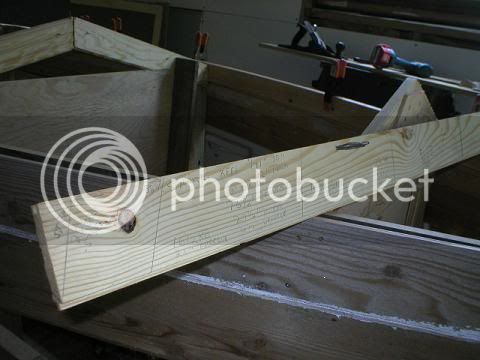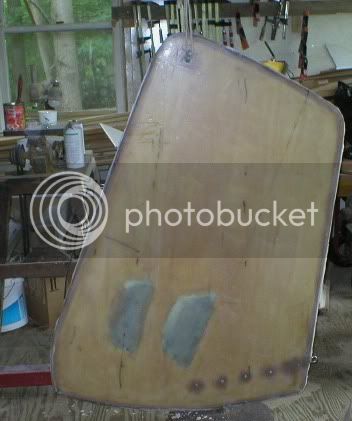This is my build on a 23 foot Skipjack of my own design using reclaimed lumber and creative building technique working around dumpster wood that I used from a local lumberyard that sells home building materials. The thread will be loaded with photos but hopefully will not cause much harm for the dialup guys.
I will organize some posts detailing the build that will show that all things are possible if you only believe and in some cases discount the purists and naysayers. But be warned try this at your own expense as I do not recommend this for the first timers.
I built two hulls out of reclaimed wood, a 20 footer and a 23 footer from the scraps that was not fit for use in the 20 footer. This evening I will do a few more tidbits as I have time.
plans

This is the 20 footer finished. I used the leftover cypress and resawed it for the deck veneer, bookmatching for each side and did a runabout style enlay since the lengths was too chort for the traditional kingplank style decking. More later.
20 footer finished

This is the 23 round stern skipjack for shallow water sailing under sail. This boat is now four years old and still going strong with Ace Hardware paint and Kilz il base used for the primers of all the parts, Interior stuff too. I have also been using that under most all oil based paint since the late 1980s. I also se it over epoxy fairing compounds too in glass layups. Its wonderfull and quick buildup for blocking out before the shine goes on.

I use a brail line and raise the sprit up when I want to beach it and hope out or my wife does and go clamming and shelling. :wink:

I will organize some posts detailing the build that will show that all things are possible if you only believe and in some cases discount the purists and naysayers. But be warned try this at your own expense as I do not recommend this for the first timers.
I built two hulls out of reclaimed wood, a 20 footer and a 23 footer from the scraps that was not fit for use in the 20 footer. This evening I will do a few more tidbits as I have time.
plans

This is the 20 footer finished. I used the leftover cypress and resawed it for the deck veneer, bookmatching for each side and did a runabout style enlay since the lengths was too chort for the traditional kingplank style decking. More later.
20 footer finished

This is the 23 round stern skipjack for shallow water sailing under sail. This boat is now four years old and still going strong with Ace Hardware paint and Kilz il base used for the primers of all the parts, Interior stuff too. I have also been using that under most all oil based paint since the late 1980s. I also se it over epoxy fairing compounds too in glass layups. Its wonderfull and quick buildup for blocking out before the shine goes on.

I use a brail line and raise the sprit up when I want to beach it and hope out or my wife does and go clamming and shelling. :wink:

























